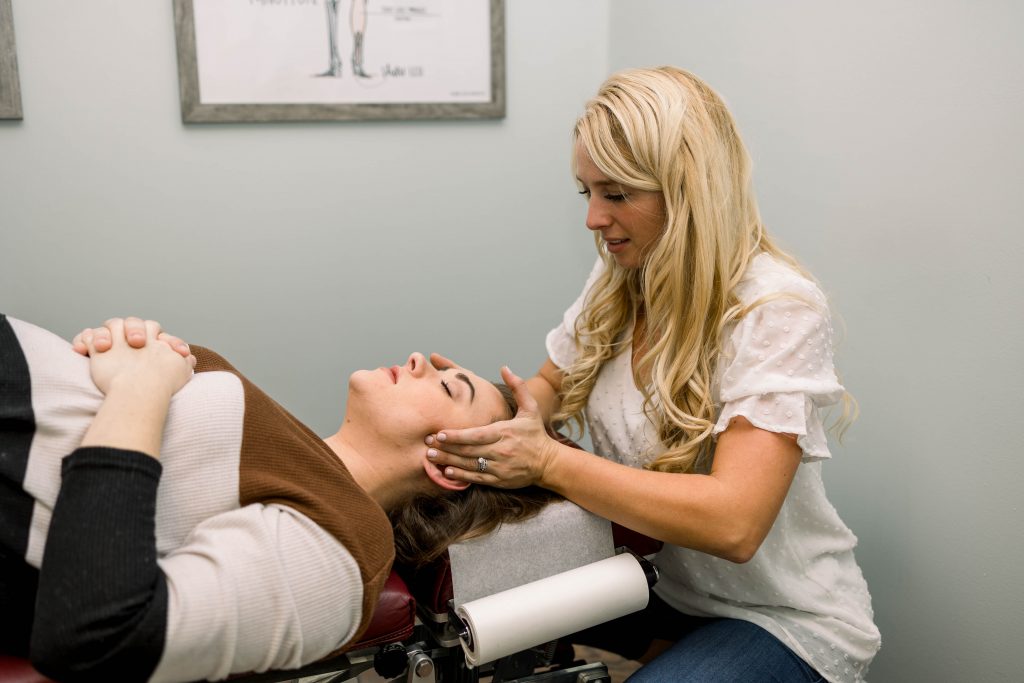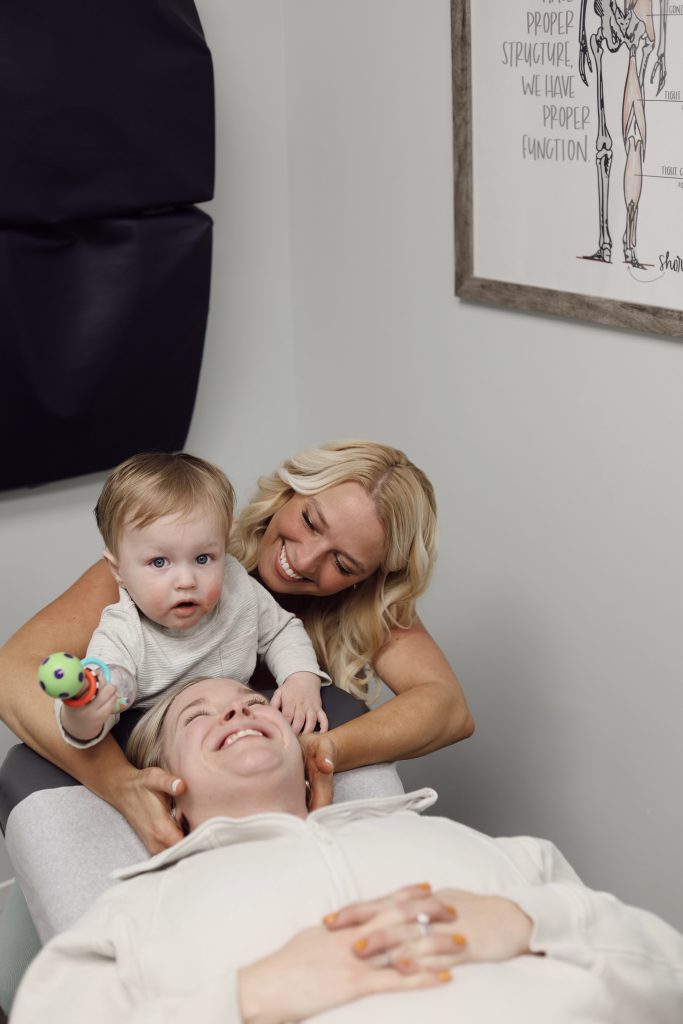
The temporomandibular joint, commonly known as TMJ, is one of the most common sources of jaw pain. The TMJ is located right behind one of the largest cranial nerves. Because of this, when the TMJ is affected, pain can spread throughout the face, which can include but is not limited to the mouth, jaw, eyes, ears, and forehead.
There are many conditions that can cause TMJ dysfunction which leads to discomfort in this area. Our everyday oral habits, like grinding teeth and biting, are affected if one side is hyperactive or doesn’t move enough. This could be due to muscular imbalances in and around the mouth, as well as within the cheeks and ears.
Jaw clenching or grinding at night, also known as bruxism, is common in both adults and kids. This can occur because of physical or emotional causes. If there are muscular imbalances in the face or a history of trauma to the face/jaw, it could lead to unintentional clenching while sleeping. Stress management can also be beneficial to reduce bruxism.
Some common signs of TMJ dysfunction include: jaw clicking/popping, chronic headaches, blurred vision, sinus congestion, difficulty chewing, and facial muscular tension. Without proper treatments, TMJ dysfunction can lead to more severe diagnoses. These could include osteoarthritis, upper cross syndrome, ear infections, and more.
What can I do about it?
- As far as diet goes, eat soft foods and avoid caffeine.
- Focus on chewing on both sides of the mouth or alternating sides frequently.
- Eliminate gum chewing and try mints instead.
- Stomach sleeping can increase jaw tension so try side lying or flat on your back.
- See your chiropractor! Through adjustments and manual therapy, it can help relieve symptoms from TMJ dysfunction.
When you come see us at your chiropractic appointment, what to expect for TMJ treatment is an adjustment (of course!), as well as cranial work. Adjusting the cervical spine, as well as the TMJ area, directly boosts one’s neuromusculoskeletal system. Cranial therapy consists of slow gentle movements, both inside and outside the mouth, to help release tension between cranial bones.
Martins, W.R.; Blasczyk, J.C.; de Aparecida Furlan Oliveira, M.; Lagôa Gonçalves, K.F.; Bonini-Rocha, A.C.; Dugailly, P.-M.; de Oliveira, R.J. Efficacy of musculoskeletal manual approach in the treatment of temporomandibular joint disorder: A systematic review with meta-analysis. Man. Ther. 2016, 21, 10–17.


Leave a Reply